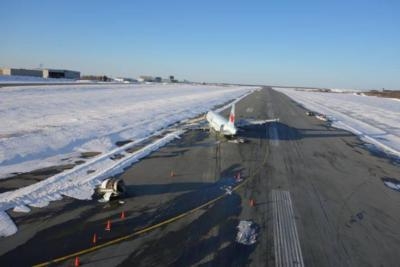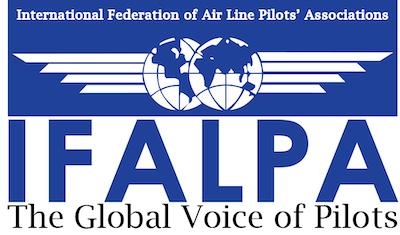Canadian High Court Allows Release of AC624 CVR Data
On 28 March 2015, an Air Canada Airbus A320-211 (C-FTJP) operating as Air Canada flight 624 departed Toronto’s Lester B. Pearson International Airport (YYZ) bound for Halifax’s Stanfield International Airport (YHZ) with 133-passengers and 5 crew-members on board. The flight was airborne at 22:05 Atlantic Daylight Time (ADT).

At 00:16 ADT on the morning of 29 March 2015, a YHZ tower controller advised AC624’s flight crew of a special weather observation issued at 00:13, which stated visibility at the airport was ½ statute-mile in snow and drifting snow, and that vertical visibility was 300-feet. Noting prevailing conditions exceeded published minimums, the flight crew elected to carry out an approach to Runway 05.
At approximately 00:30 ADT, while conducting a non-precision approach to Runway 05, the aircraft struck and severed power lines, then impacted the snow-covered ground 740-feet short of the runway threshold. The Airbus continued, airborne, through the localizer antenna array, then struck the ground twice more before sliding along the runway and coming to rest approximately 1900-feet beyond the Runway 05 threshold. The aircraft was evacuated; 25 people sustained injuries and were taken to local hospitals. Notwithstanding the fortuitous absence of post-impact fire, the A320 was destroyed.
In its 2017 final report, the Transportation Safety Board of Canada attributed the accident to pilot error, stating that its investigation had turned up no mechanical faults with the aircraft. Investigators determined that Air Canada’s standard operating procedures were over-reliant on the Airbus's automation and had led, therefore, to excessive loss of altitude.

A series of class action lawsuits were subsequently brought against Air Canada, the Halifax Airport, NAV Canada, Transport Canada, Airbus, and the aircraft's pilots. The suits alleged that the accident and resultant physical and psychological harm to passengers were ascribable to negligence on the parts of the defendants.
On 25 November 2022, the Supreme Court of Canada fatuously allowed the release of the AC624 Cockpit Voice Recorder (CVR) transcripts for use in a class action proceeding—thereby sharply, and dangerously contradicting ICAO annex 13, which states plainly and persuasively that the sole objective of an accident investigation is, “the prevention of accidents and incidents without apportioning blame or liability.”
ICAO cautions in Annex 13 that the disclosure of CVR records, “in criminal, civil, administrative or disciplinary proceedings … can have adverse consequences for persons or organizations involved in accidents and incidents, likely causing them or others to be reluctant to cooperate with accident investigation authorities in the future.”
Safety, the ICAO argues, is enhanced by open and honest in-flight conversation between crew members. The perceived threat of those conversations being brought to bear by overreaching prosecutors and litigious imbeciles is apt to see cockpit discourse restricted to the detriment of flight safety. The disclosure of CVR recordings contravenes the internationally understood principles of accident investigation confidentiality, and constitutes a breach of trust of those involved in the investigative process.

The International Federation of Air Line Pilots’ Associations (IFALPA)—which represents more than 100,000 pilots in nearly one-hundred countries—openly deplored the Supreme Court of Canada’s decision to make public the AC624 CVR transcripts. In a public statement, the organization stressed repeatedly that the CVR’s sole purpose is to aid investigators in determining the events and extrapolating the shortcomings preceding aircraft accidents, not to apportion blame or be used outside the context of improving aviation safety. Any other use of CVR data—the statement continued—occasions an unacceptable invasion of privacy, fuels wanton sensationalism, and gives rise to lurid voyeurism wholly inconsistent with ICAO standards and recommended practices.
That the Supreme Court of Canada—by misfeasance, folly, or abject stupidity—has opened the 21st Century equivalent of Pandora’s box is a distinct and distressing possibility. What is certain, however, is that Pandora’s box, once opened by a nation’s highest court, cannot be closed.
 ANN's Daily Aero-Term (04.20.24): Light Gun
ANN's Daily Aero-Term (04.20.24): Light Gun Aero-News: Quote of the Day (04.20.24)
Aero-News: Quote of the Day (04.20.24) ANN's Daily Aero-Linx (04.21.24)
ANN's Daily Aero-Linx (04.21.24) Aero-News: Quote of the Day (04.21.24)
Aero-News: Quote of the Day (04.21.24) ANN's Daily Aero-Term (04.21.24): Aircraft Conflict
ANN's Daily Aero-Term (04.21.24): Aircraft Conflict





